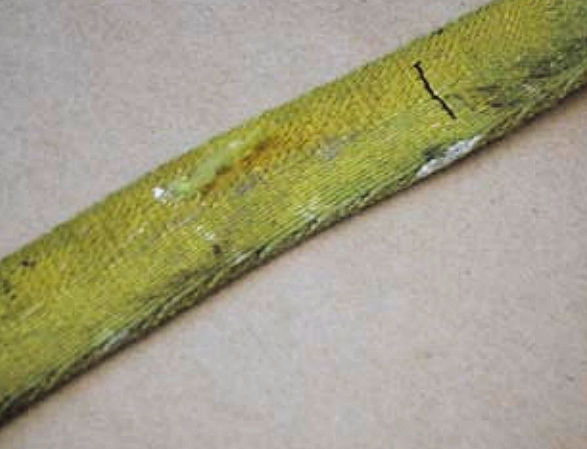Lanyards
When inspecting lanyards, begin at one end and work to the opposite end. Slowly rotate the lanyard so that the entire circumference is checked.
Spliced ends require particular attention. Hardware should be examined under procedures detailed below.
Snaps: Inspect closely for hook and eye distortion, cracks, excessive wear, and corrosion or pitted surfaces. The keeper or latch should seat into the nose without binding and should not be distorted or obstructed. The keeper spring should exert sufficient force to firmly close the keeper. Keeper rocks must provide the keeper from opening when the keeper closes.
Thimbles: The thimble (protective plastic sleeve) must be firmly seated in the eye of the splice, and the splice should have no loose or cut strands. The edges of the thimble should be free of sharp edges, distortion, or cracks.
Steel Lanyards: While rotating a steel lanyard, watch for cuts, frayed areas, or unusual wear patterns on the wire. The use of steel lanyards for fall protection without a shock-absorbing device is not recommended.
Web Lanyard: While bending webbing over a piece of pipe, observe each side of the webbed lanyard. This will reveal any cuts or breaks. Paint or other substances should not be on the webbing as it may contaminate the material. Due to the limited elasticity of the web lanyard, fall protection without the use of a shock absorber is not recommended.
Rope Lanyard: Rotation of the rope lanyard while inspecting from end to end will bring to light any fuzzy, worn, broken or cut fibers. Weakened areas from extreme loads will appear as a noticeable change in original diameter. The rope diameter should be uniform throughout, following a short break-in period. When a rope lanyard is used for fall protection, a shock-absorbing system should be included.
Shock-Absorbing Packs: The outer portion of the shock-absorbing pack should be examined for burn holes and tears. Stitching on areas where the pack is sewn to the D-ring, belt or lanyard should be examined for loose strands, rips and deterioration.
Knowledge Check Choose the best answer for the question.
8-3. Why should you bend lanyard webbing over a piece of pipe and observe each side of the webbing?
You forgot to answer the question!

